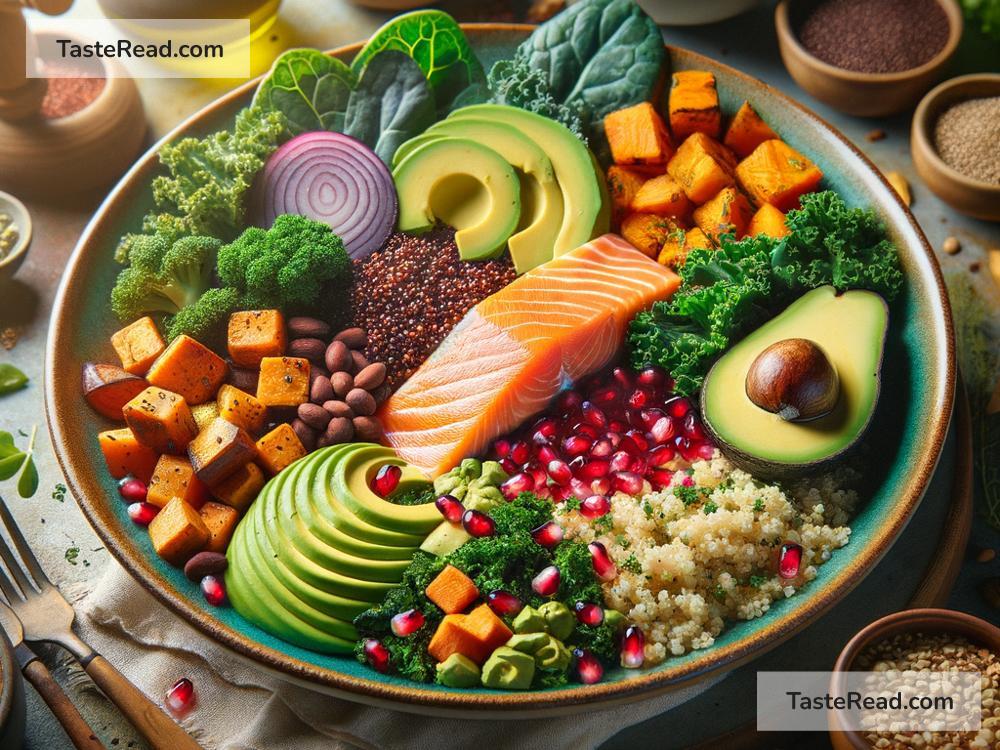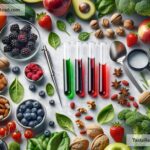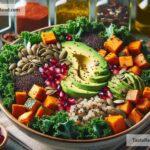The Science of Nutrient Density: Eating Smarter for Better Health
Have you ever wondered why some foods are considered healthier than others? It’s not just about calories or taste—it’s about nutrient density. While the term may sound scientific, the concept is pretty simple. Nutrient-dense foods give you more vitamins, minerals, and other beneficial nutrients for fewer calories. In this blog, we’ll break down the science of nutrient density in simple terms and explore how you can use it to improve your health.
What Is Nutrient Density?
Imagine you’re choosing between a bowl of spinach and a bag of potato chips. Both will fill your stomach, but the spinach provides a lot more nutrients like iron, vitamins A and C, fiber, calcium, and antioxidants. On the other hand, the chips mostly provide empty calories from unhealthy fats and refined carbohydrates.
This is the idea behind nutrient density. A nutrient-dense food is packed with vitamins, minerals, and other essential nutrients relative to its calorie content. In contrast, low-nutrient foods (often called “empty-calorie” foods) provide energy but very few nutrients. Essentially, nutrient-dense foods give you more bang for your buck when it comes to nutrition.
Why Is Nutrient Density Important?
Your body needs a variety of nutrients to function properly. These nutrients include:
- Vitamins (like vitamin C and vitamin D) to support your immune system.
- Minerals (like calcium and potassium) for strong bones and proper cell function.
- Fiber for healthy digestion.
- Protein for muscle repair and growth.
If you eat mostly low-nutrient foods that lack these essential components, your body may not get what it needs to stay strong and healthy. Over time, this can lead to problems like nutrient deficiencies, low energy, and a higher risk of chronic diseases like obesity, diabetes, and heart disease.
Eating nutrient-dense foods allows you to nourish your body without consuming excessive calories. This is especially helpful for people who want to maintain a healthy weight while staying active and energized.
How Do Scientists Measure Nutrient Density?
Scientists and nutrition experts often use tools and formulas to measure the nutrient density of foods. One popular method is the Nutrient Rich Foods Index (NRF). This system gives foods a score based on how much beneficial nutrients they contain compared to things you should limit, like added sugar, saturated fat, and sodium.
For example, fruits, vegetables, whole grains, lean proteins, and healthy fats usually score high because they’re rich in good nutrients. On the other hand, sugary drinks, processed snacks, and fried foods tend to score low because they lack nutrients and are often high in sugar, salt, or unhealthy fats.
Another approach is simply looking at how many vitamins and minerals a food contains per calorie. Foods like kale, blueberries, and salmon are considered nutrient superstars because they pack a lot of nutrition into every bite.
Real-Life Examples of Nutrient-Dense Foods
Here’s a quick list of some nutrient-dense foods you can include in your diet:
- Leafy greens like spinach, kale, and Swiss chard are rich in vitamins, minerals, and antioxidants.
- Fruits like berries, oranges, and apples offer fiber, vitamin C, and natural sweetness.
- Whole grains like quinoa, brown rice, and oats provide energy, fiber, and B vitamins.
- Lean proteins like chicken, fish, beans, and lentils offer muscle-building benefits.
- Nuts and seeds like almonds and chia seeds are loaded with healthy fats, protein, and micronutrients.
- Dairy or dairy alternatives like yogurt or fortified almond milk contain calcium, protein, and probiotics.
- Healthy fats from foods like avocados and olive oil support brain health and heart health.
How to Eat More Nutrient-Dense Foods
Including more nutrient-dense foods in your diet doesn’t have to be difficult. Here are a few simple tips:
-
Choose whole, unprocessed foods: Fresh fruits, vegetables, lean proteins, and whole grains are generally more nutrient-dense than packaged or processed options.
-
Fill half your plate with veggies: Vegetables are among the most nutrient-dense foods on the planet, so make them a big part of your meals.
-
Snack smarter: Instead of chips or cookies, reach for a handful of nuts or cut-up fruit.
-
Swap refined carbs for whole grains: Try brown rice, quinoa, or whole-grain pasta instead of white rice or regular pasta.
-
Cut down on empty calories: Reduce sugary drinks, sweets, and fried foods, which don’t provide much nutritional value.
-
Think color: The more colorful your plate, the more likely it contains a variety of nutrients.
The Long-Term Benefits of Nutrient-Dense Eating
Eating nutrient-dense foods doesn’t just help your body feel good in the short term—it sets the stage for long-term health. A diet rich in vitamins, minerals, and antioxidants can:
- Strengthen your immune system
- Improve your energy levels
- Boost your mood and mental health
- Reduce the risk of chronic diseases like heart disease and diabetes
- Support healthy aging
What’s even better is that nutrient-dense foods can be tasty and satisfying. You don’t have to miss out on flavor while nourishing your body!
Final Thoughts
The science of nutrient density reminds us that not all calories are created equal. Choosing foods that are rich in essential nutrients helps our bodies perform at their best. By filling your plate with nutrient-dense options like fruits, vegetables, whole grains, lean proteins, and healthy fats, you can take control of your health—one meal at a time.
So the next time you’re deciding what to eat, ask yourself: “Is this food feeding my body with the nutrients it needs?” Eating smarter isn’t about eating less—it’s about eating better. Give it a try, and your body will thank you!


